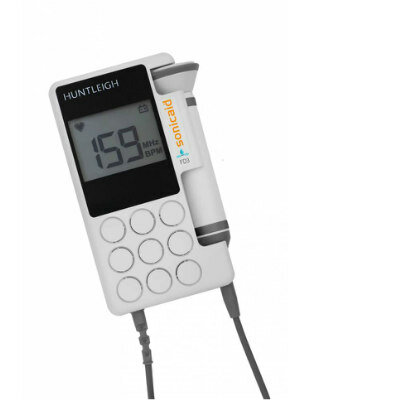Portable MR Made Possible
By MedImaging staff writers
Posted on 05 Aug 2008
Magnetic resonance imaging (MRI) provides enormous insights into the atomic structure of a biomolecule, for instance, or into the tissues of a patient's body. MRI is one of the most important imaging methods used in medicine. However, the modality has one major disadvantage: the machines are huge and extremely expensive, and almost impossible to transport. Posted on 05 Aug 2008
Scientists from the Magnetic Resonance working group at the Fraunhofer Institute for Biomedical Technology Engineering IBMT (Sankt Ingbert; Germany) have made MRI mobile. They collaborated with Magritek, (Wellington, New Zealand), a technology spin-off, to develop small portable devices.
Dr. Frank Volke, head of the Magnetic Resonance working group, explained the core technology, "Instead of the large superconducting magnets that have to be cooled with liquid helium and nitrogen, extra-strong permanent magnets are installed in our devices. There is no need for cooling anymore.” To make this possible, several permanent magnets are so arranged that the magnetic field lines overlap to form a homogeneous field. In this way, the developers have succeeded in developing small, less expensive, and above all portable magnetic resonance spectrometers that can even be powered by batteries.
Physicians and researchers all can benefit from the mobile pocket-sized nuclear magnetic resonance (NMR) devices: The first Kea NMR moles are already in use in the Antarctic, helping researchers to study the effects of environmental change by analyzing the structure of ice masses or drilled ice cores. Nevertheless, they cannot replace clinical MRI scanners for whole human body studies. There are many more potential applications for such devices, including delivering important data--directly and online--during production processes. Industrial manufacturers of sausages, cheese, or candies, for instance, can use them to analyze the fat or water content of their food products. The spectrometers can also be employed to measure the humidity of materials, characterize the molecular structure of polymers, or determine the quality of trees for wood production.
Together with Magritek, the Fraunhofer researchers provide technical instruction for users in Germany and Europe and support them with device maintenance.
Related Links:
Magritek
Fraunhofer Institute for Biomedical Technology Engineering IBMT














